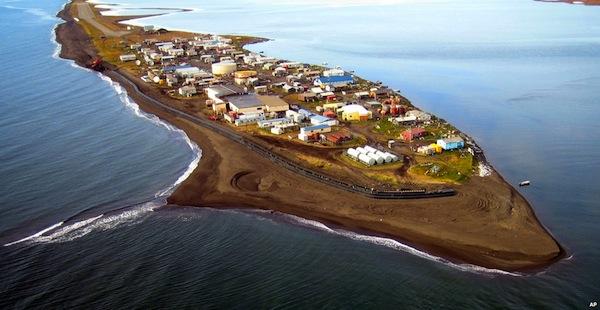Author: Kim Kalliber
Why Should Tulalip Tribal Members Care About the Affordable Care Act?
By Kyle Taylor Lucas
The Affordable Care Act (ACA), signed into law in 2010, became effective January 2014. Many questions continue to roil in the minds of American Indians about just what the new health care law means to them.
The law helps make health insurance coverage more affordable and accessible for millions of Americans, including American Indians. Importantly, the law addresses inequities, increases access to affordable health coverage and prevention medicine for tribal members. The ACA is important to American Indians because it provides greater access to care and coverage unmet by the Indian Health Service (IHS).
The ACA requires all Americans to have health care insurance coverage. However, American Indians and Alaska Natives have the option to file a lifetime exemption. They are encouraged by the state Health Care Exchange to file the exemption regardless of their current insurance status in case their insurance should ever lapse.
There are numerous state and federal agencies working to implement and manage ACA health care delivery. Tulalip members can most directly obtain enrollment process advice from clinic staff members who have received specialized training as Tribal Assisters. They can help members through the enrollment process and refer you to a broker who is licensed to provide information and advice on qualified health insurance plans and policies. Tulalip Resource Advocate, Rose Iukes, has received intensive training on the ACA. She and Brent Case can answer questions and help enroll members. Fortunately, for Tulalip members, the Board of Directors contracted with a licensed broker, Jerry Lyons, to assist members in understanding and selecting the best-qualified health insurance plan for themselves.
Contact Information:
Tribal Assisters:
Rose Iukes, Resource Advocate – (360) 716-5632 / RoseIukes@tulaliptribes-nsn.gov
Brent Case, Resource Specialist – (360) 716-5722 / BCase@tulaliptribes-nsn.gov
Broker:
Jerry Lions, American Senior Resources – (206) 999-0317
Asked about the greatest impediment to enrolling tribal members, Rose Iukes said many tribal members assume IHS coverage is sufficient, so have been disinterested in the ACA. Even so, she noted, “We had almost 800 people apply. We got probably about 250 on qualified health plans and about 150-180 on Apple.” She said efforts were hampered by the state system “going down,” which required many tribal enrollments to be done in-person. “There were so many flaws that we started having people do paper applications here at the clinic. Now, we need to have them do follow-up. We didn’t get to do a test-run on the site. We thought we could go in and enroll them, but there were additional security questions. So, now we’re asking members who completed paper applications to come in and complete their application processes.”
Even with the challenges, Washington State fared better with its overall ACA rollout than other states, leading the nation in early enrollment numbers.
Rose Iukes noted significant confusion due to the state’s failure to provide clarifying information on special tribal provisions and exemptions on its websites and call centers. She said, “I’m hoping these call centers get educated on the tribal provisions and exemptions.” She could not say why there is little detail about income, age and other special provisions posted on state websites. Publicizing details of special federal poverty level provisions and exemptions for tribal members may be confusing to the general public. The result is that the rollout for American Indians, especially urban Indians without easy access or even referral to a Tribal Assister, has been challenging. However, despite the state’s system inadequacies, Iukes praised the American Indian Health Care Commission staff and Sheryl Lowe at the Washington Health Care Exchange whose support she felt was invaluable.
“The bottom line for tribal members, if they have ACA health care they can be taken care of. And they can get the help they need. That’s what drives me and why I advocate the way, I do. I don’t want somebody to go through the heartache,” said Iukes.
Tribal members often inquire about alcohol and chemical dependency treatment options, especially as many have a history of unsuccessful treatment attempts. Iukes said that beyond the Tribe’s one treatment option, “With qualified health plans, there is unlimited treatment, but we need to find a way to help them pay their premium. For example, a young man was ready to go to treatment, but his premium was $4. It must be paid with a debit card, but he didn’t have one. Ultimately, he didn’t go to treatment. I’ve asked the Board about setting up a way for the premium to come out of per capita, then we can issue them a card to use” to pay their premiums.
Broker, Jerry Lyons, is licensed with eighty (80) different insurance companies said, “In my brief time working with Tulalip, we feel confident in our efforts. We are being successful as we have been instrumental in assisting members with questions and we have enrolled more Native Americans into the ACA than any other tribe.” He added that never in his career has he been involved in a more “disorganized” insurance roll-out, but emphasized it was not due to the tribal efforts, but rather the bureaucracy. “Even so, we have helped about 250 people obtain insurance in one way or another.” Asked if he is available to all members many of whom reside off-reservation, Lyons replied, “We assist all members. There are also many special plans that most tribes are unaware of. Just have them call me.”
Several state, public/private, federal, and non-profit organizations are supporting tribal ACA implementation and enrollment. They are the Washington Health Benefit Exchange, the Health Care Authority, the Centers for Medicare and Medicaid Services (CMS) Region 10 office in Seattle, and the American Indian Health Commission.
Washington Health Benefit Exchange (HBE)
The Washington Health Benefit Exchange was created in 2011 state law as a “public-private partnership” separate and distinct from the state. The Exchange is responsible for the creation of Washington Healthplanfinder–the online marketplace to assist Washingtonians to find, compare, and enroll in qualified health insurance plans.
Many tribal members who rely upon IHS for their health care needs question the need to apply for ACA coverage. They also question the need to go outside treaty guaranteed health care services. Unfortunately, as most trust responsibilities, health care for American Indians/Alaska Natives has been historically and woefully underfunded and continues to be so today.
When asked why the ACA is important to tribal members, Sheryl Lowe, tribal liaison with the Washington Health Benefit Exchange, said, “Individual coverage offers tribal members more access to specialty care and even if the member uses their own tribal clinic, the tribe can then bill the health insurance company rather than the Indian Health Service. She emphasized that the basic tribal contract dollars can then be utilized for other urgent and uncovered care.
Lowe said the ACA benefits both individuals and tribes. “For most tribes, IHS only provides direct care and tribes have to pay Contract Health Care. And the IHS continues to be funded at less than fifty percent of need, so the ACA is another way for individuals and tribes to access health care. Also, most tribal clinics are Priority One clinics offering basic care and provide referrals only for life and limb.”
After working out many of the bugs and training, there are 93 Tribal Assisters, at least one in each of the federally recognized tribes in Washington, the state and the Tribal Assisters are now able to focus upon a more comprehensive effort to enroll tribal members. Lowe praised the Tribal Assisters who she credits with outstanding efforts to learn a complicated enrollment process to become certified as Tribal Assisters. She said Tulalip has four Tribal Assisters and she exclaimed, “Rose Iukes is so dedicated!” The HBE shared the following statewide training statistics:
– HBE-Certified Tribal Assisters: 93
– Tribal Staff in the process of becoming Certified: 34
– 66 Active Tribal Assisters helped 10,000 people enroll through the HPF (through 2/15/14)
– Tribal Assisters represented 25 Tribes, 2 Urban Indian Organizations, and SPIPA
The Health Benefit Exchange reports that statewide, of the 26,378 who answered “yes” to “Are you an American Indian/Alaska Native [AI/AN]?” on the ACA enrollment site, 21,201 of “enrolled tribal members” have enrolled in the Healthplanfinder. Significantly, 17,350 enrolled in Washington Apple Health (expanded Medicaid). Unfortunately, of the 3,885 AI/ANs eligible for Qualified Health Plans, only 1,110 actually enrolled even though many would likely have zero to low premiums and no cost shares.
Lowe said she couldn’t emphasize enough the importance of tribal members considering enrollment because those whose income falls in 138 – 300 percent of federal poverty level have no cost-sharing which means no co-pay or deductibles, “which is a huge benefit.” She added, “Depending upon household size and other factors, some may even have a premium that is zero. They can take the tax credit to lower their monthly premium or take it at the end of the year. Those in the 138 – 400% of poverty level are eligible for premium tax credits. Depending upon income or household size you can get tax credits which will reduce your overall costs.” She pointed out that some plans have deductibles for $5000 for a family before they’ll pay anything, so the cost-sharing benefit is one of the biggest things for tribal members.” It is clearly worthwhile for tribal members to speak to a tribal assister and/or broker.
Those whose income is below 100 – 138 percent of federal poverty level qualify for expanded Medicaid or Apple Health as it is now called. However, children are eligible for Apple Health in households whose income is up to 300% of the federal poverty level. Therefore, although the adults may not qualify for Apple Health, it is important to consider that children may.
Unlike Apple Health, the Qualified Health Plans do not provide dental. Yet, the ACA does require that all children be covered by dental insurance. The HBE indicates there are two low-cost children’s plans available. Sheryl Lowe indicates there is also discussion about the potential of adult dental plans to be introduced in 2016. Broker, Jerry Lyons, encourages tribal members to ask him about low-cost and special plans that most tribes are unaware.
Washington Health Care Authority (HCA)
The HCA oversees Washington expanded Medicaid or Apple Health plan for low-income residents. Washington is one of 27 states implementing expanded Medicaid. Of the many benefits for American Indians from the new health care law, expanded Medicaid seems most significant. Eligibility for Apple Health (expanded Medicaid) is the same for tribal members and the general public–that is household income below 100 – 138 percent of the federal poverty level. Tribal members in the Apple Health Program would not be eligible for tax credit that is offered tribal members in the Qualified Health Plans. However, one important benefit is that effective January; dental coverage for adults was restored.
Through expanded Medicaid in Washington, countless low-income American Indians and Alaska Natives can now receive specialty care. As of March 25, 2014, of all who identified as AI/ANs at enrollment, 17,350 have enrolled in Washington Apple Health (or expanded Medicaid). Staff at the Tulalip Tribes health clinic is working to update Tulalip enrollment numbers. Rose Iukes reported it is difficult because many are in process of updating enrollment after the glitches in the state system caused the Tribe to revert to paper applications.
Tribal members can enroll monthly by the 23rd, and then the plan starts the first of next month.
Big changes in Medicaid/Apple Health became effective January 2014. Because of the ACA, more people are able to get preventive care, like check-ups and cancer screenings, treatment for diabetes and high blood pressure, and many other health care services they need to stay healthy.
Apple Health (Medicaid) Benefit Changes Effective January 2014
Dental Services for Adults: Dental health benefits were restored for individuals 21 years of age and older in January. Ensure that your dentist is enrolled as a Medicaid provider.
Mental Health Services Unlimited Number of Visits: Beginning in 2014, there are no limits on the number of visits for mental health services in a calendar year.
Expanded Pool of Licensed Providers: Previously, psychiatrists were the sole mental health provider approved for adults, but effective January 2014, mental health services can be sought from a variety of providers. Coverage is expanded to services by Licensed Advanced Social Workers, Licensed Independent Social Workers, Licensed Mental Health Counselors, Licensed Marriage and Family Therapists and Psychologists. Just ensure your provider is enrolled with Medicaid.
Preventative Care Shingles Vaccine: Beginning January 2014, Apple Health shall will cover the shingles vaccination for clients 60 years of age and older. Age 60 or older is considered the most effective time to receive the vaccine.
Oral Contraception: Effective 2014: Apple Health now allows eligible clients the option to fill birth control prescriptions for a 12-month period.
Early Intervention Screening for Substance Abuse: Apple Health will cover services provided by trained, certified medical providers who conduct screening, brief intervention, and referral for treatment for individuals who may present as facing challenges with substance abuse, including alcohol, drugs and tobacco.
Screening of Children for Autism: Funding has been approved so that Apple Health’s enrolled primary care physicians can screen your child, if they are under three years of age to assess for autism.
Licensed Naturopathic Physicians serving as Primary Care Doctors: Beginning in 2014, licensed naturopathic physicians are able to provide primary care services. Given there are a limited number of primary care physicians, individuals possessing a Washington Department of Health Naturopathic Physician license shall be able to provide care in the scope of care outlined by Department of Health, including diagnosing, administering vaccines and immunizations, provide referrals to specialists, conduct minor office procedures, and write limited Food and Drug Administration-approved prescriptions.
Vendors that Provide Wheelchairs and Accessories: In 2014, Apple Health will provide coverage of wheelchairs and accessories from vendors Medicare certified to provide Complex Rehabilitation Technology items.
Centers for Medicare and Medicaid Services (CMS) & Indian Health Care (IHS)
The federal CMS has a Region 10 office to assist tribes with questions about expanded Medicaid and Medicare services. They were unable to be reached for comment. Per the CMS website statement, “Within the vast reforms in PPACA, AI/AN populations will be affected not only by the general provisions, but through specific, explicit provisions, including the permanent reauthorization of the Indian Health Care Improvement Act.”
A question unanswered by both CMS and IHS is how the federal trust responsibility intersects with tribal elders no longer qualifying for expanded Medicaid or Apple Health once they reach age 65. The Washington Health Benefit Exchange is attempting to secure answers to the inquiry. Ideally, those elders would be covered by treaty guaranteed programs created through IHS in their federal trust responsibility and expanded Medicaid that continues beyond age 65.
Though the IHS did not respond to questions about its continuing federal trust responsibility for tribal health care, according to its website, IHS states “it will continue to provide quality, culturally appropriate services to eligible American Indians and Alaska Natives.” Both the CMS and IHS websites also point to the ACA as benefiting Indian elders with strengthened Medicare, affordable prescriptions, and free preventive services regardless of their provider.
The IHS website notes that if tribal members buy private insurance in the Health Insurance Marketplace, they will not have to pay out-of-pocket costs like deductibles, copayments, and coinsurance if their “income is up to around $70,650 for a family of 4.” The IHS assures members of federally recognized they are eligible to continue receiving services from the Indian Health Service, tribal health programs, or urban Indian health programs even if they have obtained insurance in the marketplace.
The Native American Contact (NAC) for CMS Region 10 is Deborah Sosa. Deb is the agency’s main contact for questions or clarification on:
- health policies related to the Medicare, Medicaid, and CHIP programs
- policies and programs under the Affordable Care Act, such as the new health insurance exchanges/marketplaces, and
- emerging health policies and issues that arise in your community.
She can be reached directly at Deborah.Sosa@cms.hhs.gov or by telephone at (206) 615-2267.
Basic ACA Details for Tribal Members
Exemption
American Indian and Alaska Native consumers who are members of federally recognized tribes have access to a Tribal Membership Exemption from the shared responsibility requirement payment. The exemption applies to American Indian and Alaska Natives who are members of federally recognized tribes and are unable to maintain minimum essential coverage for any time during the year.
To receive an exemption, members may apply through the Marketplace, through their tax return submitted to the Internal Revenue Service by April 2015, or members can receive assistance from either Rose Iukes or Brent Case whose contact information is provided earlier in this story. Alternatively, members can access the form at the following website: http://marketplace.cms.gov/getofficialresources/publications-and-articles/tribal-exemption.pdf
If you have health insurance coverage from your employer or if you have other health care coverage (through Medicare, Medicaid, CHIP, VA Health Benefits, or TRICARE), you are covered and don’t need to worry about paying the shared responsibility payment or enrolling for health coverage available through the Health Insurance Marketplace. However, tribal members are encouraged to complete the tribal lifetime exemption regardless of current coverage.
Enrollment
A frequent question arises about enrollment periods. There is no enrollment period or deadline for members of federally recognized tribes and Alaska Native shareholders who can enroll in Marketplace coverage any time of year. Plans can be changed as often as once per month. Be sure to apply no later than the 23rd of the month for benefits to become effective on the first of the following month. Again, see Rose Iukes at the clinic for assistance. Otherwise, information can also be found at the Health Benefit Exchange – Health Plan Finder website: https://www.wahealthplanfinder.org
Insurance Premiums
Premium payment is due by the 23rd of each month for coverage beginning the following month. Payment can be made by echeck or debit card. Recurring payments can only be setup by echeck. Autopay requires an email address. Rose Iukes can assist you with this during enrollment.
Urban Tulalip Tribal Members
The Health Care Authority tribal liaison, Karol Dixon, recommends that enrolled Tulalip tribal members who reside off-reservation, but within Washington state, can access enrollment assistance by telephoning the Tribal Assister at their tribal clinic (Rose Iukes), but if it is more convenient–they can enroll through the HCA website. In fact, all tribal members can enroll there if they choose. At the website, they can locate a Navigator or Broker who can assist them with the process and in selecting a plan. Select the question mark in the top right of the web page to see links to Navigator or Broker at: https://www.wahealthplanfinder.org
Unfortunately, Tulalip members residing outside of Washington are not eligible to enroll through the Washington Healthcare Exchange. They will need to enroll in the state in which they reside. This is disappointing for any members who may be residing in one of the 24 states that have not expanded Medicaid.
Summary
Many American Indians/Alaska Natives are taking advantage of expanded Medicaid as demonstrated by enrollment data reported by the Health Care Exchange. However, enrollment in the Qualified Health Plans, which offer tribal members many tax credits and cost-share exemptions, could be improved. Moreover, the ACA offers American Indians many advantages expanded access and coverage in both Apple Health and the Qualified Health Plans.
Some political and policy questions remain unanswered such as the federal trust responsibility and how that extends to care for tribal elders 65 and over who have no Medicare coverage. One would hope that the ACA’s permanent reauthorization of the Indian Health Care Improvement Act, extending and authorizing new programs and services within the IHS will find a means to address that void in care for our dear elders.
Early enrollment reports from the Health Care Exchange indicate American Indians/Alaska Natives have taken advantage of expanded Medicaid in Washington State. Many of those tribal members were urban Indians who formerly had little access to any health care, so the ACA is proving itself critical to the health services of urban Indians. Those same individuals can also now receive what for many is urgent dental care.
From early indications, the ACA is fulfilling some of its promise in that it is reducing the number of uninsured Americans with more than 8 million Americans enrolling to date. And the number (17,350) of AI/AN enrolled in Washington’s Apple Health (Medicaid) plan as of March 25 seems to indicate the ACA is fulfilling some of its promise to low-income AI/AN and children. Increased tribal enrollment in the marketplace and in expanded Medicaid will free IHS tribal contract dollars for the tribe to utilize for other urgent care needs.
Many political and policy questions remain unanswered relative to trust responsibility and treaty guaranteed expectations. The possibilities of tribal sponsorship have not yet been fully explored. However, in Washington, and at Tulalip, there is a determined effort by many dedicated individuals and organizations to right some of the historic federal oversights in Indian health care.
Kyle Taylor Lucas is a freelance journalist and speaker. She is a member of The Tulalip Tribes and can be reached at KyleTaylorLucas@msn.com / Linkedin: http://www.linkedin.com/in/kyletaylorlucas
ATV Protest Rides Through Native American Sacred Sites
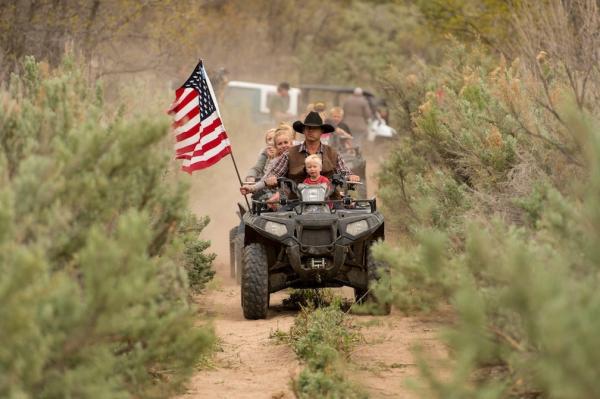
Ryan Bundy, son of the Nevada rancher Cliven Bundy, rides an ATV into Recapture Canyon north of Blanding, Utah on Saturday, May 10, 2014, in a protest against what demonstrators call the federal government’s overreaching control of public lands. The area has been closed to motorized use since 2007 when an illegal trail was found that cuts through Ancestral Puebloan ruins. The canyon is open to hikers and horseback riders.
ATVs have not been allowed through Recapture Canyon since 2007, but that didn’t stop a group of protesters on Saturday, May 10 from riding the trail—which is full of Native American sacred sites—anyway.
The Bureau of Land Management closed Recapture Canyon in Blanding, Utah to ATVs in 2007 after enthusiasts were caught trying to construct another trail illegally, and in so doing damaged archaeological sites, reports The Salt Lake Tribune.
Saturday’s ride was a demonstration by residents and San Juan County Commissioner Phil Lyman that they want control of the lands in public hands, a fight that has been going on for eight years. Only eight percent of San Juan County is not managed by the BLM, reports the Los Angeles Times.
Lyman and others who want the canyon reopened to ATVs argue that their families have been using the land for recreation for years.
“My grandfather called that canyon the most beautiful thing he’d ever seen in his life. It’s important to our family. To see it as the focal point of a conflict is painful,” Lyman said before riding into the canyon on an ATV, to the Los Angeles Times.

But there are others who have been in the area for far longer than Lyman and his supporters.
“Since well before the state of Nevada, the federal government, and farmers and ranchers occupied the area, tribal nations—including the Las Vegas Band of Paiute, Moapa Band of Paiute, and other tribes in the area—have respected and honored the Utah Canyon as a sacred place,” the National Congress of American Indians said in a statement opposing the ride. “Native peoples believe the canyon contains many markers from their ancestors. An action like this is no more appropriate than a similar activity at a church or other place of worship.”
RELATED: NCAI Urges Cliven Bundy to Respect Native Ancestral Sites; Cancel Rally

A number of other groups have also spoken out against the ride.
“We believe the [Bureau of Land Management] should be providing more law enforcement to protect and preserve the cultural and natural resources for which it is the nation’s caretaker, and not providing more motorized access to areas containing cultural and natural resources that it has demonstrated that it is unable to protect,” Leigh J. Kuwanwisiwma, preservation director for the Hopi, wrote in a May 1 letter to the BLM.
“It is sad that irreplaceable treasures of importance to all Americans would be sacrificed on the altar of anti-government fervor,” Jerry Spangler, executive director of the Colorado Plateau Archaeological Alliance, said in a statement. “It is worse that protesters would be so blinded to their own insensitivity as to what others consider to be sacred treasures of their past.”
Willie Grayeyes, chair of a nonprofit that lobbies to protect Navajo land, was offended not only by the lack of sensitivity of the riders for Native culture, but also because a veterans retreat had to be relocated because of the protest.
“This opportunity for healing, to help these men and women has been postponed due to the threats of illegal activities by San Juan County Commissioner Phil Lyman on behalf of those who desire to drive their ATV toys over the sacred ruins of others,” wrote Grayeyes in a letter to The Salt Lake Tribune.
Many are comparing this recent protest to the exploits of private rancher Cliven Bundy in Nevada, whose cattle graze for free on U.S. government land.
RELATED: Cliven Bundy: Racist Remarks, and Reports of Ranching Since Only 1954
Read more at http://indiancountrytodaymedianetwork.com/2014/05/12/atv-protest-rides-through-native-american-sacred-sites-154840?page=0%2C1
USGS Geologist Doubts Cause Of Oso Landslide Will Ever Be Pinned Down
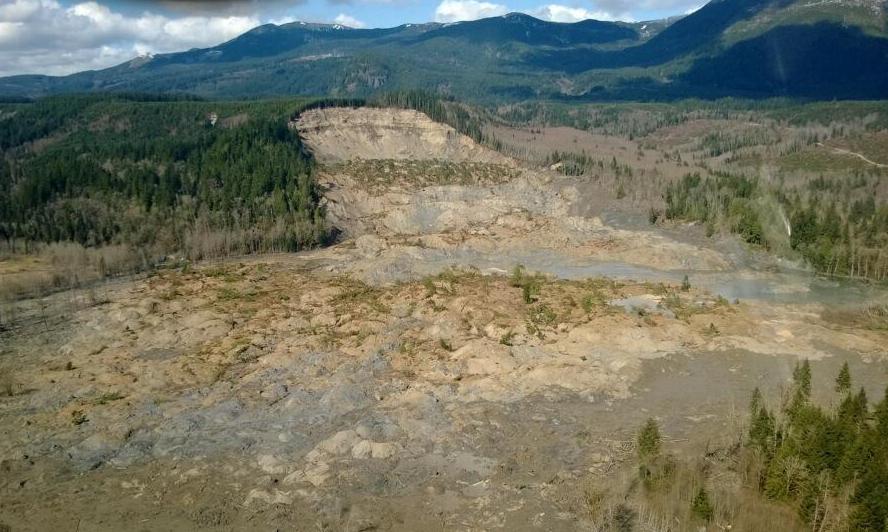
File photo of landslide near Oso, Washington. | credit: Washington Governor’s Office
By Tom Banse, Northwest News Network
A federal geologist doubts the cause of the deadly landslide near Oso, Washington will ever be fully pinned down.
During testimony in Olympia Monday, U.S. Geological Survey scientist Jonathan Godt said heavy rains in February and March certainly contributed to the slide. Geologists have also ruled out an earthquake as a trigger. But Godt says a big missing piece is groundwater flows, for which there’s no data.
“We didn’t have instruments in the ground at the time the landslide occurred and you can’t put the slide back up on the slope,” Godt said. “So from an observational standpoint, that opportunity is lost.”
Godt spoke to the Washington Forest Practices Board, a panel which is reexamining logging rules around landslide prone areas. A Washington state geologist and a private consulting geologist also presented there Monday. None would speculate if historic clear-cuts had anything to do with the March landslide.
Investigators are asking for more money from FEMA to probe why the Oso landslide traveled so far from its origin.
The death toll from the March 22 slide in Snohomish County stands at 41. Two additional people are still listed as missing.
This story first appeared on Northwest News Network.
Large Crowd Attends Memorial For Billy Frank Jr.
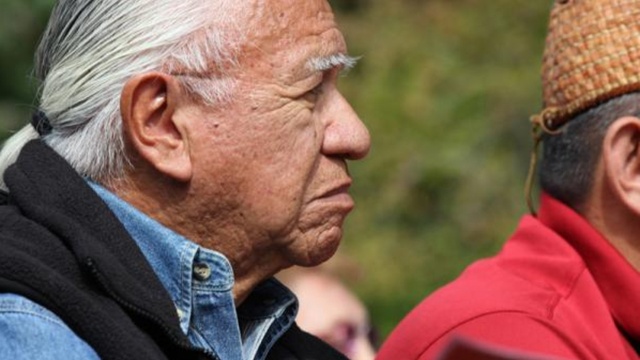
Associated Press
SHELTON, Wash. (AP) — Thousands of people attended a funeral service for Billy Frank Jr., the Nisqually tribal elder who fought for Indian fishing rights in Washington state and was an advocate for salmon habitat.
Frank died May 5. He was 83.
Frank figured prominently in Northwest fish-in demonstrations of the 1960s and 1970s that eventually led to sweeping changes in how Washington manages salmon and other fish.
Among those at the service Sunday at the Little Creek Casino Resort’s Event Center were Gov. Jay Inslee and Sens. Patty Murray and Maria Cantwell. Inslee said Frank was a state and national leader and that when he spoke, “people listened.”
About 6,000 people attended the service, said Little Creek spokesman Greg Fritz. Crowds also watched the service on jumbo screens from a large tent and other areas of the resort.
The service featured traditional Indian Shaker Church prayers, a presentation of a folded U.S. flag for the family — Frank had served in the Marine Corps — and remarks from more than 20 tribal leaders and elected officials.
“I often said that no one cared more about salmon and the planet Earth than our friend Billy,” said former U.S. Rep. Norm Dicks.
Cantwell described him as “a legend that has walked among us,” comparing his legacy to those of Cesar Chavez, Martin Luther King Jr. and Nelson Mandela.
Frank was arrested more than 50 times for “illegal fishing” during the protests that came to be known as the fish wars. Patterned after the sit-ins of the civil rights movement, the campaign was part of larger nationwide movement in the 1960s for American Indian rights.
In 1992, Frank was awarded the Albert Schweitzer Prize for Humanitarianism, whose winners include former President Jimmy Carter and Desmond Tutu.
Swinomish tribal chairman Brian Cladoosby, president of the National Congress of American Indians, described Frank as a forceful teacher and a truth teller.
“Billy treated everyone with respect, even when we failed to live up to his expectations,” Cladoosby said.
Casey Kasem might be on ‘Indian reservation’

Source: USA Today
The big question: Where is Casey Kasem?
His daughter, Kerri Kasem, thinks he may have “fled the country” or possibly be on “an Indian Reservation.”
A judge on Monday ordered an investigation into the whereabouts of the famed radio countdown host, 82. An attorney for Kasem’s wife, Jean, told the court that Casey Kasem, who became famous for his weekly American Top 40 radio show and as the voice of Shaggy in the Scooby-Doo cartoon, had been removed from Los Angeles without his children’s knowledge. He has advanced Parkinson’s and can no longer speak.
Superior Court Judge Daniel S. Murphy ordered a court investigator and adult protective services to find out where Kasem is being treated, reported AP. Kasem has been in various medical facilities chosen by his wife. Jean Kasem, and Kasem’s kids have long been battling over their father.
CNN reports that also on Monday, Kasem’s daughter, Kerri Kasem, was named as temporary conservator of her dad.
The conservatorship is in effect until June 20, when a hearing is scheduled on whether to make the conservatorship permanent, according to the Los Angeles County Superior Court spokeswoman Patricia Kelly.
“Justice was finally served! I just won temporary conservatorship over my father’s healthcare. We have been vindicated by the court. Thank you for your prayers, well wishes and support through this entire ordeal,” Kasem’s daughter, Kerri Kasem, posted on her Facebook page soon after the order.
Later, she added: “I believe my father’s wife fled the country (or possibly went to an Indian Reservation) with my Dad because she knew I would win in court today. The judge ordered, Adult Protective Services, the PVP Attorney and the police to look for him. Please pray that he is safe.”
NCAI Urges Cliven Bundy to Respect Native Ancestral Sites and Cancel Utah Canyon Rally
Climate Disruptions Hitting More and More Tribal Nations
Native Americans have long had a close relationship with their lands and waters—sacred places and resources that define their lives. The disruptions wrought by a warming climate are forcing abrupt cultural changes on peoples with a long reliance on a once stable ecosystem.
Among the special issues affecting tribes, the 2013 Assessment of Climate Change in the Southwestern United States (SWCA) cited “cultural and religious impacts, impacts to sustainable livelihoods, population emigration, and threats to the feasibility of living conditions.”
RELATED: Climate Change Hits Natives Hardest
The Hoh, Quinault, Quileute and Makah nations inhabit low-lying land along the west coast of Washington State, and face similar threats as rising sea levels and the other impacts of climate disruptions endanger their villages.
”The area is relatively vulnerable,” Patty Glick, senior global warming specialist and author of a 2007 National Wildlife Federation report, ”Sea Level Rise and Coastal Habitats in the Pacific Northwest,” told Indian Country Today Media Network in 2008. Higher wave action, wave force and destructive storm surges will increase in the coming decade, Glick said, and destructive storms such as the hurricanes will become more frequent.
RELATED: Olympic Coast Tribes Face Rising Ocean Levels
The Hoh road to the beach has washed out, and the ocean has destroyed the homes that once lined their beach. In Quinault, a passing storm tossed gigantic logs onto the school grounds. These events intensified both tribes’ agenda to get higher ground returned from the Olympic National Park beyond their tiny reservation boundaries.
The Makah and the Quinault nations have large reservations, but their seaside villages are at risk, as evidenced by the recent state of emergency at Quinault headquarters in Taholah, which faced an increasingly dangerous situation with sea level rise and intensified storms, which breached a sea wall causing serious damage.
According to Climate Central, which uses data from NOAA and the USGS, there is a greater than one in six chance that sea level rise, plus storm surge, plus tides, will raise sea levels by more than one foot before 2020 along the coastline and in the Puget Sound region, where another eight tribes are situated. The Shoalwater Bay sits nearly out to sea in southwest Washington.
Rising sea levels will affect Washington’s shoreline habitat for vegetation, animals, birds and fish, according to Glick’s report. Marshes, swamps and tidal flats will be significantly affected, and salmon and shellfish habitat are expected to be significantly affected, Glick reported.
Along Alaska’s northwestern coast, melting sea ice has reduced natural coastal protection. Increased coastal erosion is causing some shorelines to retreat at rates averaging tens of feet per year. In Shishmaref and Kivalina, Alaska, severe erosion has caused homes to collapse into the sea, according to the Environmental Protection Agency, forcing these Alaska Native Village populations to relocate in order to protect lives and property.
RELATED: Alaskan Native Communities Facing Climate-Induced Relocation
Moving inland, “Climate change is slowly tipping the balance in favor of more frequent, longer lasting, and more intense droughts,” states the SWCA. The Navajo Nation is experiencing annual average temperatures warmer than the 1904-2011 average, cites a climate report released in March 2014. Latest figures show their drought continuing beyond 2010 studies into July 2013, indicating the drought continues.
RELATED: New Report Aims to Help Navajo Nation Cope With Climate Change
Perhaps among the worst of those impacts are the runaway sand dunes it has unleashed, which extend over one-third the 27,000-square-mile reservation. During the 1996-2009 drought period the extent of dune fields increased by some 70%. These dunes are moving at rates of approximately 35 meters per year, covering houses, burying cars and snarling traffic, degrading grazing and agricultural lands, contributing to the loss of rare and endangered native plants, and when they occur contributing to poor air quality, a serious health concern for many of the reservation’s 173,667 residents.
RELATED: Climate Change, Drought Transforming Navajo’s Dunescape to a Dust Bowl
Intertribal organizations around the U.S. are recognizing climate change and variability as a significant factor that can impact tribal resources, livelihoods, and cultures, cites the latest tribal climate report. The National Tribal Air Association notes that “perhaps no other community of people has experienced the adverse impacts of climate change more than the nation’s Indian tribes.”
The struggle will soon come to more tribes. Sea level rise projections do not bode well and may already be a cause of concern for the tribes along Louisiana’s Gulf of Mexico—the United Houma Nation, the Atakapa-Ishak Nation, Pointe-au-Chien Tribe, and the Biloxi-Chitimacha’s Isle de Jean Charles Band, Grand Caillou/Dulac Band and Bayou Lafourche Band. In Florida—the Miccosukee, and some locations of the Seminole Indian Reservations. Ocean residing tribal nations in California include the Agua Caliente Band of Cahuilla, Cahto, Chumash, Hoopa, Karok, Kumeyaay, Luiseño Bands of Indians, Maidu, Miwok, and some bands of the Pomo Nation. Some are more at risk than others.
RELATED: 6 Tribal Nations Taking a Direct Hit From Extreme Weather
Read more at http://indiancountrytodaymedianetwork.com/2014/05/07/climate-disruptions-hitting-more-and-more-tribal-nations-154747?page=0%2C1
Inslee Predicts Washington Will Adopt Controversial Fuel Standard
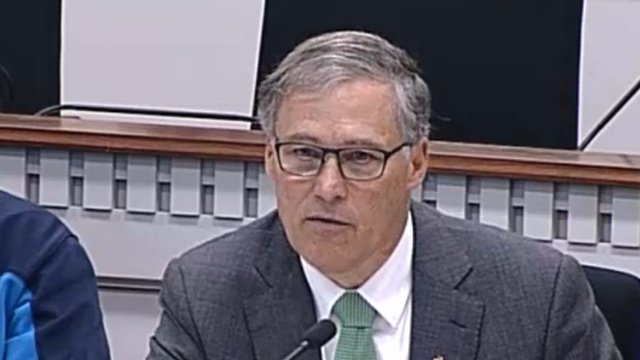
Austin Jenkins, NW News Network
Democratic Gov. Jay Inslee says Washington will likely adopt a California-style pollution limit on gasoline and other transportation fuels.
Inslee recently ordered a feasibility and cost study of a low-carbon fuel standard.
For months now, Washington Republicans have been predicting that Inslee will use his executive powers to enact a low-carbon fuel standard. Inslee acknowledges he’s looking at ways to do this without legislative approval. Either way he thinks Washington is poised to move forward.
“I think it’s a probability that we will be able to fashion a low-carbon fuel standard that will be effective for the state of Washington, both for carbon pollution and from a cost-containment standpoint,” Inslee said during an appearance on Seattle Channel’s “Civic Cocktail” program. “From what I know today, I think it’s a likelihood we will succeed in fashioning that, but I want reiterate we’re going to have a very sophisticated, thorough evaluation of that before I make that ultimate decision.”
A low-carbon fuel standard is basically a requirement that vehicle fuels be blended with less carbon-intensive alternative fuels. For instance, California’s standard requires a 10 percent reduction in carbon intensity of gas and diesel over 10 years.
Inslee has promised a “deliberative, public process” as he pursues carbon pollution reduction measures in Washington. Legislative Republicans oppose a fuel standard and say it could drive up the cost of gasoline.
This was first reported for the Northwest News Network.
Gathering The Stories Of Northwest People ‘Left Out’ Of History
By Tom Banse, NW News Network
It started with the discovery of long-forgotten gravestones in a thicket of bramble and alder. That set one author on the faint trail of a feisty Native American woman and oyster farmer who lived in 19th century western Washington.
The biographer is using the resulting book to inspire other Northwesterners — particularly tribal members. She wants to bring out the stories of people who, in her words, have been “left out of our histories.”
The waterfront cottage that LLyn De Danaan calls home on Oyster Bay in Mason County, Washington, overlooks a cultural crossroads rich in history. So it is fortunate she is a cultural anthropologist by profession. Her eyes and ears are tuned to signs and stories of place. And at this place, waves of settlers came from the earliest times to reap shellfish.
De Danaan moved here in the early 1970s. In recent decades, she heard enough tales about one pioneer to start a file. The name was Katie Gale. This independent businesswoman owned property and tidelands in her own name in the late 1800s.
“That was all a little bit unusual from conventional wisdom and things I had heard about both people in the oyster business and Native American women,” says De Danaan.
Finding Katie Gale
The biographer was fascinated by how Gale straddled different worlds and stood up for herself and her mixed race children.

“I suppose there just were too many things about that that intrigued me that I couldn’t let go of it,” she says. “I literally couldn’t let go of it for years!”
A turning point came when De Danaan and several friends from the historical society discovered an overgrown little homestead graveyard a mile from her house. One of the headstones belonged to Katie Gale.
“I was so amazed, excited, enthralled that I began beating on Stan’s shoulders as he was kneeling in front of me holding this stone.”
Her friend had to plead with her to contain her excitement and stop it.
“I literally said, ‘I know who this is,’ as if she were an acquaintance of mine. But it almost felt that way,” recalls De Danaan. “I would say that was a moment of calling. I have to tell this woman’s story. I have to know her.”
But here’s the problem: the long-dead Katie Gale left no letters, no journals. De Danaan could find no photographs of her, no living descendants. The best source material was a divorce case file. It took almost a decade to accumulate corroborating details, context and enough educated guesses to write a biography. “Katie Gale: A Coast Salish Woman’s Life on Oyster Bay” was published last fall.
“So many stories not told”
But the tale doesn’t stop there.
“There are so many stories not told,” says De Danaan. “There are so many histories and people left out of our histories. That is what my work has to be now. I feel that it is my obligation to do that.”
At a writing class at the Evergreen State College Longhouse in Olympia, De Danaan is a guest speaker.
De Danaan exhorts the seminar to bring forth stories before they’re lost, perhaps starting with family history. This is a message De Danaan returns to again and again in regular public talks and one-on-one mentoring.
“You’re able to find out a lot more than you think,” she says.
All of the students in the circle facing the author this day are Native American. It takes awhile, but eventually sensitivities come out.
Keeping tradition and culture alive

One student says she was hesitant about taking the class. Her grandmothers warned against exposing too much of their Spokane tribal heritage to outsiders who might twist it or exploit it.
Makah tribal member Vince Cook heard that from his elders too.
“That’s a tough one,” he says. “Because when I was younger we were told not to record, not to videotape.”
Cook says attitudes are changing now as people see tradition and culture slipping away. He feels spurred to write about his great grandmother and all the things she taught him.
“I think it is important to continue on not only for myself, but for my family and for others to know about the Makah culture and to keep it alive,” says Cook.
Another person who says author De Danaan encouraged him is amateur folklorist Si Matta of rural Pe Ell, Washington. Matta’s focus is on gathering the stories of his ancestors from the Cascade (Watala) Indian tribe who once lived and fished in the Columbia River Gorge.
He’s approaching the task in a thoroughly modern way by soliciting and sharing material and old photographs via a website and Facebook page.








